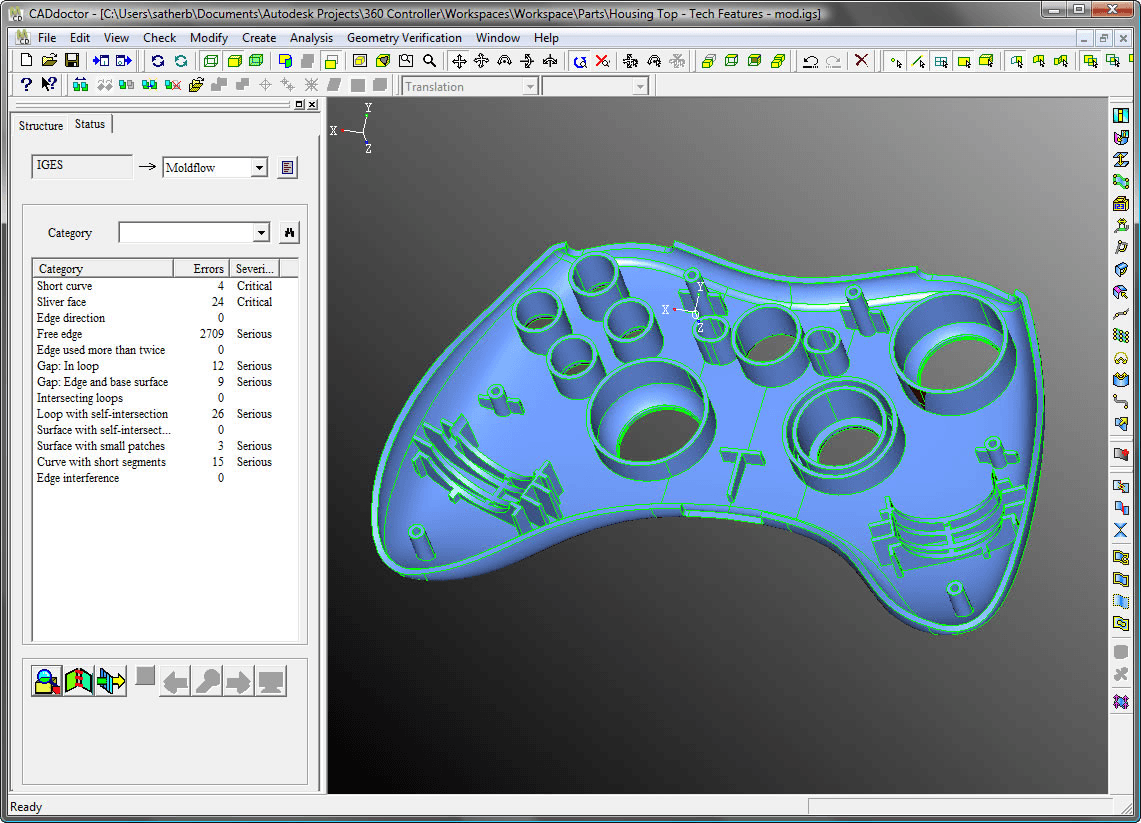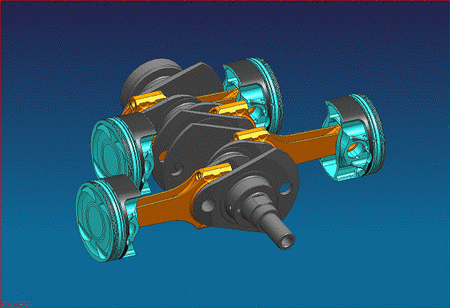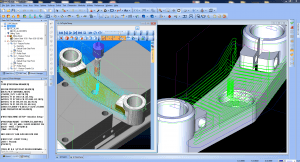Computer-aided Design and Computer-aided Manufacturing Software (CAD/CAM) Information
 Computer-aided design and computer-aided manufacturing software (CAD/CAM) allows engineers, architects, and designers to create conceptual drawings for assessment and approval.
Computer-aided design and computer-aided manufacturing software (CAD/CAM) allows engineers, architects, and designers to create conceptual drawings for assessment and approval.
Since both CAD and CAM use computer-based methods for encoding geometrical data, it is possible for the processes of design and manufacture to be highly integrated. Computer-aided design and manufacturing systems are commonly referred to as CAD/CAM.
Typically, CAD software and CAM software runs on mainframe computers, general-purpose workstations, and personal computers (PCs). Computer operating systems (OS) include Microsoft Windows, UNIX, Solaris, and SunOS. Computer-aided design and computer-aided manufacturing software (CAD/CAM) for specialized hardware or proprietary operating systems is also available.
CAD vs. CAM
Computer-aided design
 CAD is the use of computer systems to assist in the creation, modification, analysis, or optimization of a design. The computer models are defined by geometrical parameters and appear on the computer monitor as a three-dimensional representation of a system of parts that can be easily altered by changing relevant parameters. Products created in CAD can be tested by simulating real-world conditions.
CAD is the use of computer systems to assist in the creation, modification, analysis, or optimization of a design. The computer models are defined by geometrical parameters and appear on the computer monitor as a three-dimensional representation of a system of parts that can be easily altered by changing relevant parameters. Products created in CAD can be tested by simulating real-world conditions.
Computer-aided design and computer-aided manufacturing software (CAD/CAM) may also be used to prepare printed circuit board (PCB) and integrated circuit (IC) designs for manufacturing.
For a comparison of computer-aided design editors visit Computer - Aided Design (CAD) Services by clicking here.
Computer manufacturing software
 CAM uses geometrical design data to control automated machinery. CAM systems are associated with numerical control (NC) software applications to create detailed instructions that drive computer numerical control (CNC) or direct numerical control (DNC) machine tools for manufacturing parts. CAM systems can maximize the utility of a full range of production equipment, including high speed, 5-axis, multi-function and turning machines, and electrical discharge machining (EDM).
CAM uses geometrical design data to control automated machinery. CAM systems are associated with numerical control (NC) software applications to create detailed instructions that drive computer numerical control (CNC) or direct numerical control (DNC) machine tools for manufacturing parts. CAM systems can maximize the utility of a full range of production equipment, including high speed, 5-axis, multi-function and turning machines, and electrical discharge machining (EDM).
Mechanical engineers use CAM software to calculate tool paths and set up machining operations. Typically these tool paths are stored in cutter location (CL) format and exported to a postprocessor for conversion to a NC program. With CAM software, most NC programs use text files and incorporate start and stop locations along a grid with X, Y, and Z axes. CNC manufacturing uses a special programmer to specify the machining operations. In turn, the CAM software creates the CNC program. Machines such as lathes, routers, lasers, water jets, and plasma tables often use two-dimensional models (2D CAM software). By contrast, most milling machines use three-dimensional models (3D CAM software).
Types
There are several types of computer-aided design and computer-aided manufacturing software (CAD/CAM) that are listed as CAD programs. Capabilities often differ by application. For example, two-dimensional CAD or 2D CAD software is suitable for drafting services and general-purpose applications. By contrast, three-dimensional CAD or 3D CAD software is well-suited for machine shops, product designers, reverse engineering, and complex surfacing.
Within 3D software there are further specialties, including wireframe/surface modeling and constructive solid geometry solid modeling to build parts that are actually solid objects with volume, and if given a density can have a weight and mass as well.
Application
Suppliers of computer-aided design and computer-aided manufactured software (CAD/CAM) may provide specialized CAD software for specific applications. For example, architectural CAD software is used by architects, builders, facility managers, and construction companies. Landscape CAD software is used by landscape designers and architects, as well as by municipalities and environmental planners.
Specialized CAD products design structural steel and concrete. CAD file viewers, CAD file converters, CAD file red lining, CAD symbols, and CAD libraries are also available. As with CAD programs, there are many types of computer-aided design and computer-aided manufacturing software (CAD/CAM) for high-volume production. Computer-aided manufacturing software (CAM) allows designers to import CAD files and control specific manufacturing equipment.
CAD software can be found in industries from automotive and aerospace to fashion and cartography.
Standards
Computer-aided design and computer-aided manufactured software (CAD/CAM) must follow standards to ensure proper design and functionality. These standards include COMPUTER-AIDED DESIGN, MA which is the proceedings from the second International Conference on Computer-Aided Design, Manufacturing, Modeling and Simulation in 2012 and Ford G-2 which discusses standards for computer aided design.
References
Computer-Aided Design (CAD) and Computer-Aided Manufacturing (CAM)
CAD Software: The Many Uses for Computer-Aided Design
CAM / Computer-Aided Manufacturing
Engineering Software - CAD, CAM, FEA - CAD Software Programs
Images
IHS GlobalSpec | MotorWorld Hype | BobCAD-CAM | cad-vs-bim
- Alabama
- Arizona
- California
- Colorado
- Connecticut
- District of Columbia
- Florida
- Georgia
- Iowa
- Idaho
- Illinois
- Indiana
- Louisiana
- Massachusetts
- Maryland
- Maine
- Michigan
- Minnesota
- Missouri
- Montana
- North Carolina
- New Hampshire
- New Jersey
- New Mexico
- New York
- Ohio
- Oregon
- Pennsylvania
- Rhode Island
- South Carolina
- Tennessee
- Texas
- Utah
- Virginia
- Washington
- Wisconsin
- mechanical CAD software
- FANUC CAD 3D
- AutoCAD conveyor
- DXF
- software ds2431
- multisim software
- obd2 simulator software
- postprocessor heidenhain
- compass downloader software
- ad7730 software
- CAD drawings railcar
- CFD analysis
- dental CAD cam
- drywall details CAD
- elevator design VHDL
- heatsink design software
- lm90 software
- mac CNC software
- physical modeling software
- procast software
- pw2400 software
- roller track 3D CAD
- software pneumotion
- software yagi optimizer
- spectra CAD engraver
- thermal modeling software
- 2d cam software
- 6 axis cam software
- countertop CAD software
- globoidal cam software
